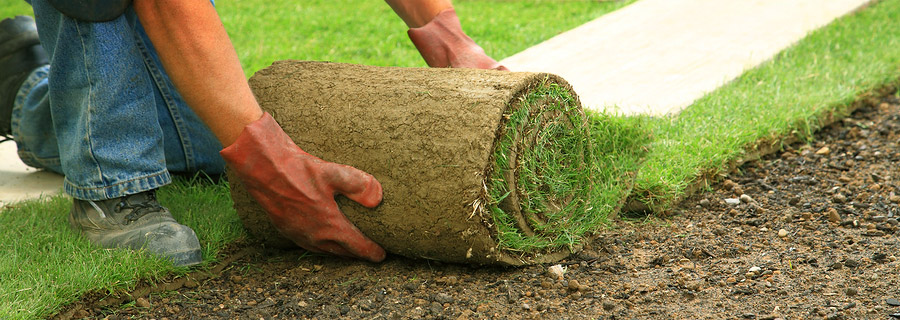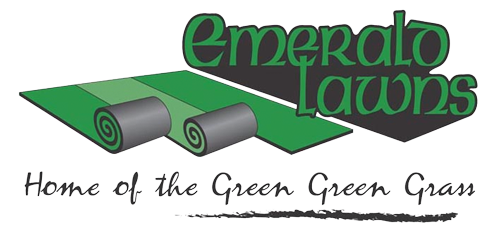
Turf Grass Buyers Guide Ireland
In general “turf” prices can vary from approximately £0.50 to £10.00 per square metre, like any material, depending on the quality and specification. Therefore the purpose of this guide is to explain the characteristics of turf, which can lead to this huge variation in price. Hopefully this will ensure that when you are buying turf, you will have confidence you are getting good value for money.
Loosely categorising; at the top end of the market is turf grown for specific sporting applications on special growing mediums or “root zones”, whilst “cultivated” turf comes before “pasture” or “meadow” turf at the bottom end of the market. Ultimately the price is generally representative of the quality, however the only way to be sure is to physically inspect the proposed turf before buying. Ideally visit the farm where the turf is grown and inspect it in person. If this is not practical, at the very least you should request referrals to accessible sites where the proposed turf has been recently laid.
The most important criteria you should be looking for are listed as follows, and detailed further in this guide:
- Good quality cultivars of seed specific for the purpose
- Absence of broad leaved weeds (e.g. thistles)
- Absence of coarse grass weeds (e.g. “scutch”)
- Tightly knitted, short sward, with attractive appearance
- Roll size, thickness of cut, weight and strength
At the bottom end of the market “pasture” or “meadow” turf is turf stripped from agricultural fields previously used for grazing livestock. Depending on the maintenance program, if any, this sward can often be invaded to varying extents with broad-leaved weeds, such as thistles and coarse grass weeds, such as “scutch”. Obviously the original grasses sown were not selected for lawn purposes and are coarse in texture, thin in density and not suitable for close mowing. Therefore the chances of ever achieving a satisfactory quality lawn are extremely limited.
“Cultivated” turf comes from agricultural land that has been cultivated and sown with garden lawn species grasses with the intention of being used only for lawn purposes. The vast majority of agricultural land is not ideal for cultivated turf production because it is not relatively stone free and / or too “heavy” (contains too much silt and clay). On land with too much stone content the eventual harvested turf has to be cut “thick” by the turf grower, to allow for the stones, otherwise a comparatively “thin” turf would be weak when handled, due to the lack of a uniform root structure. “Heavy” land contains a high proportion of silt and clay particles, meaning it will be relatively slow to absorb water. Therefore during, or after any rainfall, turf harvested from this land will be relatively heavy to handle and consequentially weak, or even brittle. Turf harvested from either, or a combination of the above types of land, is often cut in “slabs” or small roll sizes of less than one square metre, to overcome the weakness and weight problems if cut in full square metre rolls. This turf will be more time consuming to lay than full sized one square metre rolls, due to their smaller size (therefore relatively more rolls to be physically handled). In addition any potential weakness issues will require this turf to be handled delicately, taking more time again. At worst, brittle turf can lead to excessive wastage, where there is insufficient turf to complete the job.
Depending on the maintenance program applied, cultivated turf will reflect this through its visual quality. Turf, which has been closely mown on a regular basis, will have a dense, “cropped” sward. If not the grass will be long and sparse, leading to thinning out and prone to weed invasion when it is eventually closely mown. Broad leaved weeds (for example thistles) should be completely absent, as they are very easy to control by means of a suitable herbicide applied by the turf growers, if they have been diligent. However coarse grass weeds are notoriously more difficult to control. Regardless of the quality of the land used by turf growers for turf production and the cleanliness of the seed sown, coarse grass weeds can be present. “Scutch” grass is very aggressive in nature and can colonise the entire lawn relatively quickly. It’s coarse creeping tillers look very unsightly compared to the more desirable finer lawn grass species. However, coarse grass weeds generally only thrive in “heavy”, slow draining land, as they do not prefer free draining “sandy” soils.
Emerald Lawns was established back in the 1980s and is still today Ireland’s leading cultivated turfgrass sod grower, with in excess of 200 acres of the lightest, stone free land in the country, specifically selected, tested & dedicated for this purpose. Our size, structure and experience allows us to produce the highest quality turfgrass sod at competitive prices, even when delivered to any location in Ireland. Emerald Lawns are the most frequently specified turfgrass sod grower for unrivalled quality, performance & value. We continue to supply some of the most prestigious and demanding customers in the country, including: Landsdowne Road, Dublin and the K Club in County Kildare, as well numerous other leading organisations.
Ready to upgrade your lawn?
If you are ready to upgrade your lawn, Emerald Lawns are ready to help you. We are the leading supplier of turf-grass in Ireland, so you know you are in good hands.
Order Your Turf Now!